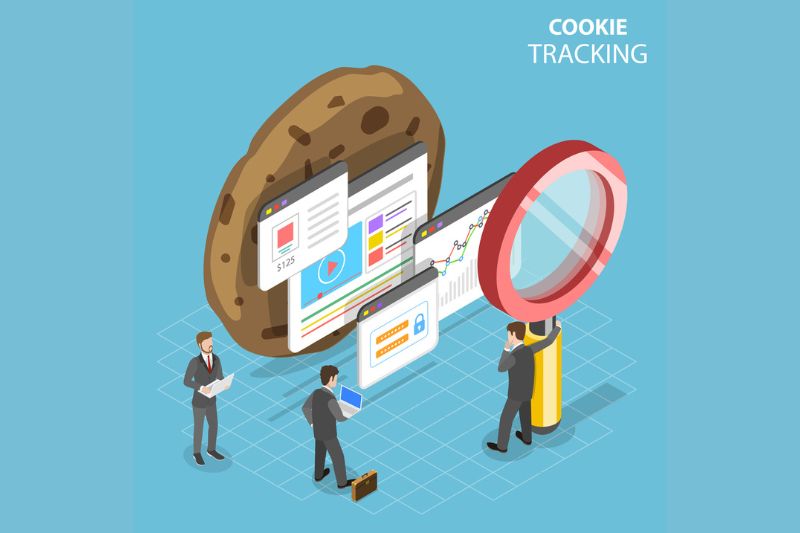In 2023, Google will be joining their counterparts Safari and Firefox in getting rid of third-party cookies. With 83% of marketers saying they still use third-party cookies for advertising this could have a significant impact on how a range of companies and organisations implement their marketing plans. [1]
Here Cogency provides a bit more detail on the upcoming changes and what will it ultimately mean for digital marketing activity.
What exactly are third-party cookies?
To begin with, its important to understand what a browser cookie is. A cookie is a tiny piece of data that is put onto your computer by the web browser you are using. They are used so that websites can remember your online activities and preferences while you were on their website. Third-party cookies are browser cookies that are placed on a website but by a third-party so that they can track a user’s online activity as they go from site to site. Third-party cookies are mainly used for advertising purposes such as retargeting/remarketing.
Remarketing/ retargeting focuses on users who visit a business’s website but leave without conversing. As the user surfs the web, they are retargeted back to the business’s website with personalised ads and displays effectively ‘following’ them from site to site. Have you ever gone onto a website, put an item into your bag but changed your mind and a few hours later you are targeted with the same item but on a different website? Well, this is remarketing/retargeting at work, the business is trying to remind you of the item you nearly purchased in the hopes that you will come back to the site and buy it.
What will Google replace third-party cookies with?
Google’s plan is to replace third-party cookies with Topics API which will involve collecting a web user’s top five interests based on their browsing activities. Google will find these interests by comparing them to a list of 350 topics. Every week, five topics based on a user’s online activity will be chosen. Once this process is done three times, one topic randomly selected from each week is given to paying advertisers so that they can target their audiences with ads based on these interests. After three weeks, topics are deleted and the process is started again.
What does this mean for marketers?
Although marketers won’t be able to use remarketing/ retargeting to displace personalized ads to web users anymore, they will still be able to use Google’s Topic API and first-party data that they collect from their website, which they can use to create personalized ads when the user is on their website.
Alternatives to third-party cookies
Contextual advertising
As Google start to phase out third-party cookies, marketers should turn their attention to contextual advertising as a replacement. Contextual advertising focuses on the quality of the content on your website and your keywords. When you place an ad using contextual advertising, your ad will appear to web users based on the relevance of your website’s content and keywords to their search. To maximise your return using contextual advertising, you should focus on having as much relevant content and keywords for your audience.
In some ways, contextual advertising is better than third-party cookies as it targets users based on their current mindset and not their mind frame from the past.
Zero party data
Another alternative to using third-party cookies is zero party data. This is data that is actively shared by a user to a website. Consumers agree to give information to the website so that they can have a more personalised experience on the site.
Today, more consumers than ever are concerned with their data privacy, asking consumers upfront about their information creates a level of trust and transparency, that they appreciate. Zero-party data is also a reliable source of customer data as it comes directly from the customers.
Ways to encourage users to give up their zero-party data is through surveys, polls and multi-step forms.
Social media marketing
With 4.62 billion social media users, advertising on social media is an ample alternative to third-party cookies. [2] Many social media sites allow you to target your audience based on their demographics and online behaviour. This means you can reach the right audience with the correct ad.
Email marketing
Email marketing is another great platform, you can use to target your audience with personalized ads. Using email analytics, you can understand how your customers engage with your emails, so you can segment your email lists into different categories such as location, purchasing habits or gender. Through segmentation, you can target your customers with the right email.
Conclusion
Although marketers won’t be able to use Google’s third-party cookies to create personalized ads to target their customer base there is still many other options available. By using zero party data, email marketing, social media and contextual adverting, marketers can still get the right ad in front of their target markets.
[1] https://www.marketingcharts.com/customer-centric/datadriven-118489#:~:text=Customer%2DCentric%20%7C%20Data%2Ddriven,digital%20media%20challenges%20this%20year
[2] https://www.smartinsights.com/social-media-marketing/social-media-strategy/new-global-social-media-research
